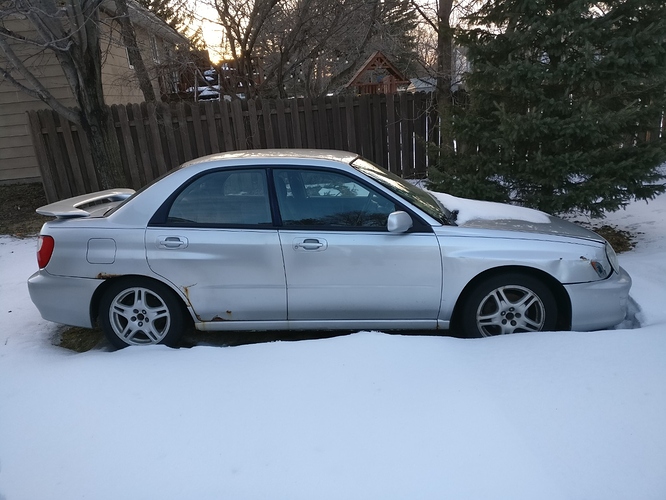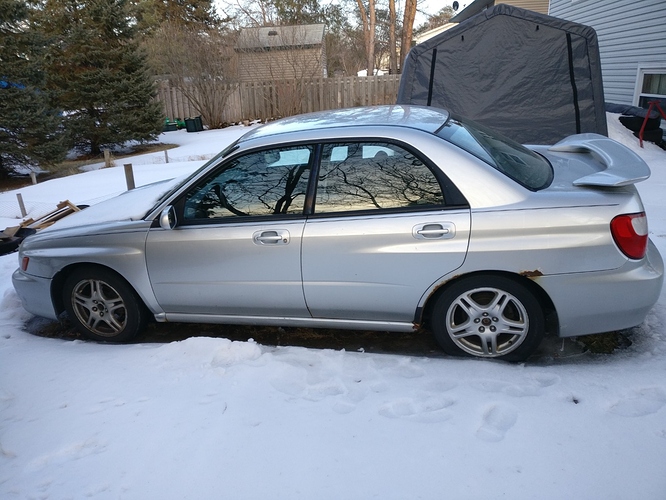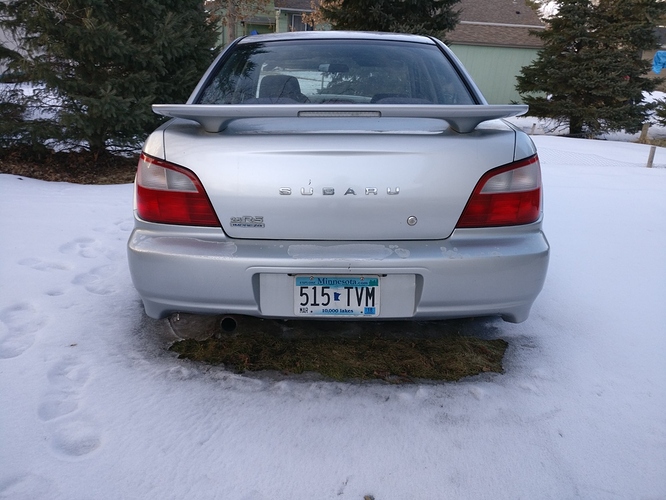Some of the basics we need to consider now:
2: ELIGIBILITY
2.1: Vehicle Eligibility: Entry limited to mass-produced, four-wheeled vehicles legal for US highway use at the time of their manufacture. Vehicles must be acquired and prepared for a maximum of $500 as described in Section 4. Vehicles must meet all safety standards laid out in Section 3. The vehicle’s original, manufacturer-stated curb weight may not exceed 4200 pounds. Individual waivers may be granted; just don’t ask about Peterbilts, Zambonis, sidecars, or golf carts again. We already said no.
2.2: Driver Eligibility: All drivers must have a valid US or International driver’s license and a valid Lemons Competition Membership. Lemons Competition Memberships are good for one year from the date of purchase. No other competition licenses are recognized or reciprocated.
2.2.1: Drivers Under 18: Drivers under 18 years of age must get a notarized letter of permission from their parents or legal guardians and signed waiver. You might also want to ask said parents or legal guardians why they’d ever allow you to do this; it probably means they’ve been poaching your college fund.
2.2.2: No Passengers Allowed: Due to the strident insistence of the Fun Police, no passengers are allowed.
2.3: Tire Eligibility: DOT-approved street tires only, minimum treadwear rating 190, factory cast into sidewall; no exceptions. BTW, don’t call us to moan that there aren’t any good tires sold in that range. That’s the damn point.
2.4: Whiner Eligibility. Whiners are not eligible to compete. If you believe that you might be a whiner, please check with a domestic partner, guardian, or healthcare professional before getting the rest of your team kicked the hell out of the race.
3.D GENERAL VEHICLE REGULATIONS
3.D.1 Minimum Wheelbase. The minimum acceptable wheelbase is 82 inches (as delivered by the factory). Cars with smaller wheelbases may be granted a waiver by Lemons after extensive review of the team’s construction and safety plans. (These plans inevitably require extensive, high-quality engineering; lots of new material; and huge amounts of high-quality fabrication. If you’re the least bit shy on talent, dedication, or budget, it’s better to pick something else.)
3.D.2 OE Crush Structures. Modifications that reduce the size and/or effectiveness of OE crush structures — including but not limited to shortening or removing frame rails or unibody structures outside the wheelbase — are discouraged in the strongest possible terms. Cars with compromised OE crush structures are exceedingly likely to fail tech. Non-OE replacement crush structures are not an acceptable substitute; you and your stick welder ain’t NHTSA.
3.D.3 No Gullwings. Or Lambo doors, or anything else that will trap you inside when you roll.
4: VEHICLE PRICE
4.1: Total Investment in Vehicle Can Not Exceed $500: Except for items described in Rules 4.2 and 4.3, the total spent to purchase and prepare any car may not exceed $500.
4.1.1: Lame-Ass Rationalizations: Cars that “should be” worth $500 don’t count; cars that “were worth $500” before you spent another $2000 to fix them don’t count; cars you’ve owned for 20 years and spent more than $500 on during that time don’t count; “it would have been worth $500 if it didn’t already have a cage” doesn’t count. Five hundred dollars means five hundred frickin’ dollars.
4.1.2: Lame-Ass Rationalizations About Parts: Same deal. “Free” parts, parts given to you by your buddies, parts left lying around the shop…that crap doesn’t impress us. It’s worth whatever the last real guy paid in the last real purchase. Don’t think you’re clever.
4.2: Safety Equipment DOES NOT Count Toward $500 Total: Safety equipment described in Section 3 DOES NOT count toward the $500 total. “Safety” refers to things that can save the driver–not things that can save the car.
4.2.1: Beside the items and processes listed in Section 3, the following are considered safety-related and therefore exempt:
Wheels, tires, wheel bearings, balljoints, and brake components
Exhaust systems downstream of the header/exhaust manifold (NOTE: Turbos and related components are NOT exempt from the $500 limit. Nice try.)
Windshields and wipers.
Driver comfort & information (steering wheel, shifter, gauges, pedals, cool suits, vents, heaters, radio)
All fuel hoses, fuel fittings, fuel filters, and related mounts
All fuel-system components upstream of the fuel pump, including tanks/cells, mounts, fillers, vents, etc. (NOTE: Fuel pumps, carburetors, injection pumps, computers, and individual injectors are NOT exempt from the $500 limit.)
4.3: Registration, Insurance, and License DO NOT Count Toward $500 Total: Registration, insurance, or license charges–assuming for some reason you bothered–DO NOT count toward the $500 total.
4.4: BS Factor: To prevent cheating, all cars will be inspected by a panel appointed by the Organizers. At that time, all teams will be given an opportunity to describe the car’s purchase and prep. If the panel believes the limit set out in Rule 4.1 has been exceeded, it will assign a Bullshit Factor (BSF) equal to one BSF per $10 above the limit. The entry will be docked one lap for each BSF assigned. (Ten dollars = one BSF = one lap.) Entrants are very, very, exceedingly strongly encouraged to bring pre-race-prep photographs, verifiable receipts, notarized testimonials, plus any and all other supporting evidence to Tech/BS Inspection. Or at least make up plausible-sounding stories in advance.
4.4.1: Appeal of BSF Panel Decisions. Get real. There’s no appealing this decision. You’re boned.
4.5: Sponsorships: Conned some hardworking corp into giving you parts or cash? Nice work, but it still counts toward the $500 total. We recommend blowing that sponsorship dough on other stuff instead–hotel rooms, gasoline, entry fees, pedicures, driver suits, personal male enhancement medication, travel expenses, Freudian therapy for the Organizers…things like that.
4.6: Labor Costs: If you didn’t pay for the labor, it doesn’t count toward the $500 total. If you did pay for it, it does count toward the $500 total. This just ain’t that complicated, guys.
4.7: Scavenger Sales: If you sell pieces off of your car, the money that comes back in can be used to offset the initial purchase price. (This only applies to stuff that counts toward the $500 total; the sale of exempt items–like wheels, glass, etc.–can NOT be used to offset the initial purchase price.) Just be prepared to convince some exceedingly skeptical judges of the validity of all those transactions.
4.8: Residual Value: Dumb enough to bring the same pile back for another race? Either do the whole BS process again (bring all your papers and evidence–we ain’t gonna remember your sad-sack story from last time), or email the Chief BS Judge to beg a residual value. Include clear post-race pix of the car and list any major mechanical stuff that needs fixing.




